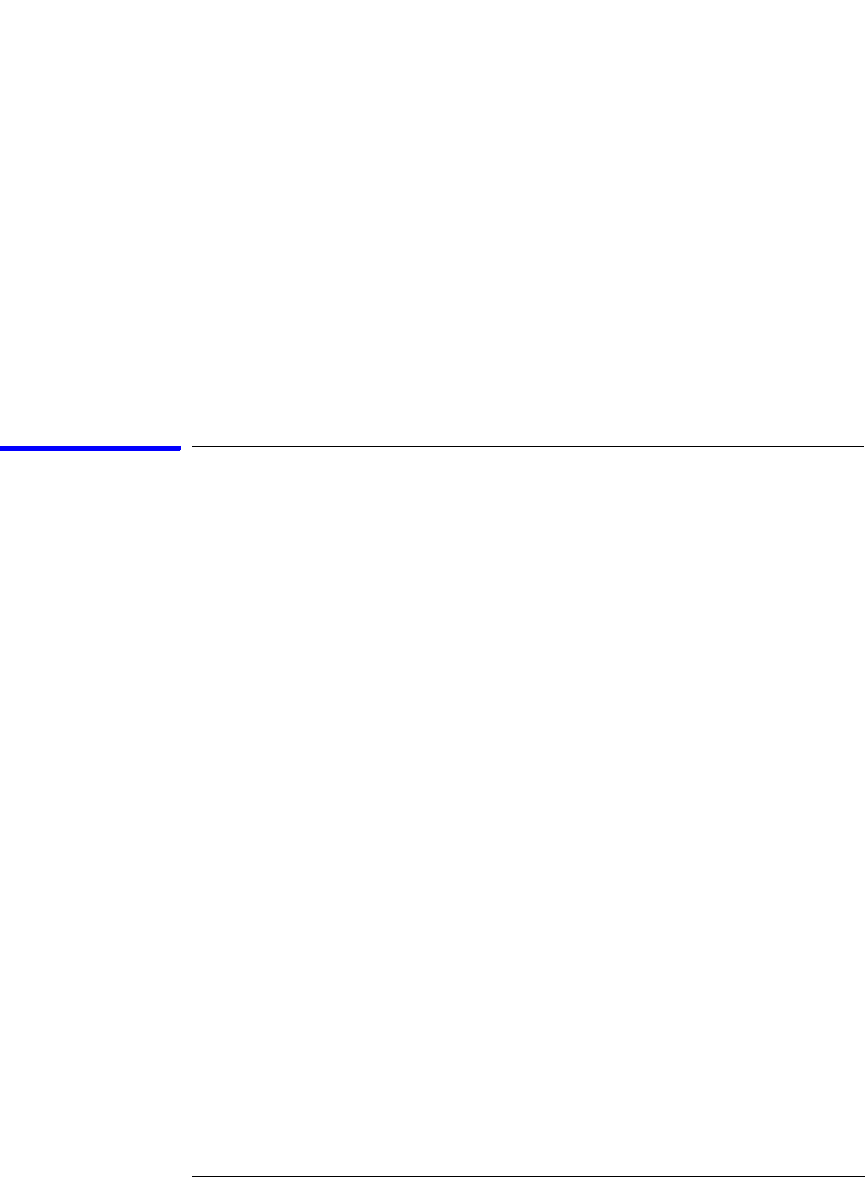User's Manual
Table Of Contents
- Agilent Technologies 16750A/B Logic Analyzer
- Agilent Technologies 16750A/B Logic Analyzer
- Contents
- Getting Started
- Step 1. Connect the logic analyzer to the device under test
- Step 2. Choose the sampling mode
- Step 3. Format labels for the probed signals
- Step 4. Define the trigger condition
- Step 5. Run the measurement
- Step 6. Display the captured data
- For More Information...
- Example: Timing measurement on counter board
- Example: State measurement on counter board
- Task Guide
- Probing the Device Under Test
- Choosing the Sampling Mode
- To select transitional timing or store qualified
- Formatting Labels for Logic Analyzer Probes
- Setting Up Triggers and Running Measurements
- Displaying Captured Data
- Using Symbols
- Printing/Exporting Captured Data
- Cross-Triggering
- Solving Logic Analysis Problems
- Saving and Loading Logic Analyzer Configurations
- Reference
- The Sampling Tab
- The Format Tab
- Importing Netlist and ASCII Files
- The Trigger Tab
- The Symbols Tab
- Error Messages
- Must assign Pod 1 on the master card to specify actions for flags
- Branch expression is too complex
- Cannot specify range on label with clock bits that span pod pairs
- Counter value checked as an event, but no increment action specified
- Goto action specifies an undefined level
- Maximum of 32 Channels Per Label
- Hardware Initialization Failed
- Must assign another pod pair to specify actions for flags
- No more Edge/Glitch resources available for this pod pair
- No more Pattern resources available for this pod pair
- No Trigger action found in the trace specification
- Slow or Missing Clock
- Timer value checked as an event, but no start action specified
- Trigger function initialization failure
- Trigger inhibited during timing prestore
- Trigger Specification is too complex
- Waiting for Trigger
- Analyzer armed from another module contains no "Arm in from IMB" event
- Specifications and Characteristics
- Concepts
- Understanding Logic Analyzer Triggering
- Understanding State Mode Sampling Positions
- Getting Started
- Glossary
- Index

97
Chapter 2: Task Guide
Using Symbols
the object file symbols are reloaded.
To delete object file symbol files
1. Select the Symbol tab, and then the Object File tab.
2. Select the file name you want to delete in the text box labeled, Object
Files with Symbols Loaded For Label.
3. Select Unload.
See Also “Symbol File Formats” on page 163
To adjust symbol values for relocated code
Use this option to add offset values to the symbols in an object file. You
will need this if some of the sections or segments of your code are
relocated in memory at run-time. This can occur if your system
dynamically loads parts of your code so that the memory addresses
that the code is loaded into are not fixed.
To adjust symbol values for a single section of code
1. Select the Symbol tab and then the Object File tab.
2. In the Object Files with Symbols Loaded For Label list, select the file
whose symbols you wish to relocate.
3. Select the Relocate Sections... button.
4. In the Section Relocation dialog, select the field you wish to edit in the
section list.
5. Enter the new value for that field and press Enter on your keyboard.
6. Repeat steps 4 through 6 above for any other sections to be relocated.
7. Select Close.
To adjust all symbol values
1. Select the Symbol tab and then the Object File tab.
2. In the Object Files with Symbols Loaded For Label list, select the file










